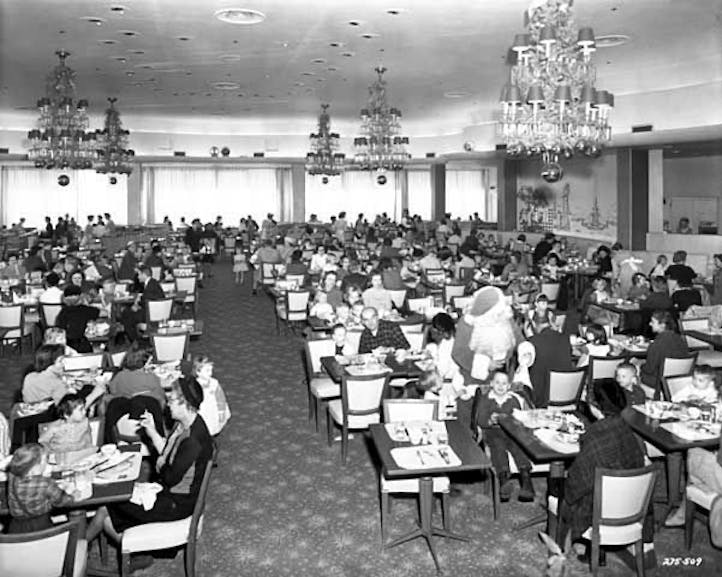
Going, going, gone: 120 – year downtown dining tradition ending at Macy’s

Going, going, gone: Macy’s is pulling the plug on the Store Formerly Known as Dayton’s.
Sometime in March, the last standing department store in downtown Minneapolis will be history. It’s a sad and probably inevitable denouement to 700 Nicollet. But let’s set aside any discussion of the Oval Room, the eighth-floor auditorium shows, the Daisy Sale and other beloved retailing legacies. This is a restaurant requiem.
That’s because the store boasts a proud 113-year dining history, one that should be celebrated. (The restaurants close on Jan. 27.)
It began in 1904. Two years after founder George Draper Dayton opened the store that eventually bore his name, a restaurant opened on the fourth floor. In the period’s parlance, it was called a tearoom, and shoppers arrived, in droves.
Expansion yielded newer, larger food-and-drink destinations, eventually culminating in the 12th floor’s fraternal twins. Their original names were the Men’s Oak Grill and the Sky Room, and both were key players in a burst of postwar optimism, a multimillion-dollar expansion that elevated Dayton’s into the fraternity of the nation’s 10 largest department stores.
True, other Dayton-driven innovations were just down the road.
In 1956, Southdale, the nation’s first enclosed shopping mall, would open in Edina, forever changing the way America shopped. The transformation of the nation’s retail landscape continued six years later, when the company launched its first Target store in Roseville. Today, the discounter, the nation’s second-largest retailer, operates nearly 1,800 outlets. In 1966, Dayton’s debuted B. Dalton, a bookseller that became a familiar name across the country; it was sold to Barnes & Noble in 1987.
But the 1947 addition was an investment that cemented the store’s supremacy on the state’s retail landscape. And what a lasting legacy: The two restaurants (a third, the Tiffin, a casual but stylish cafeteria, fizzled in the 1960s) have lived long after the Dayton’s name was pulled from the building in 2001, replaced first by Marshall Field’s, and then, five years later, by Macy’s.
